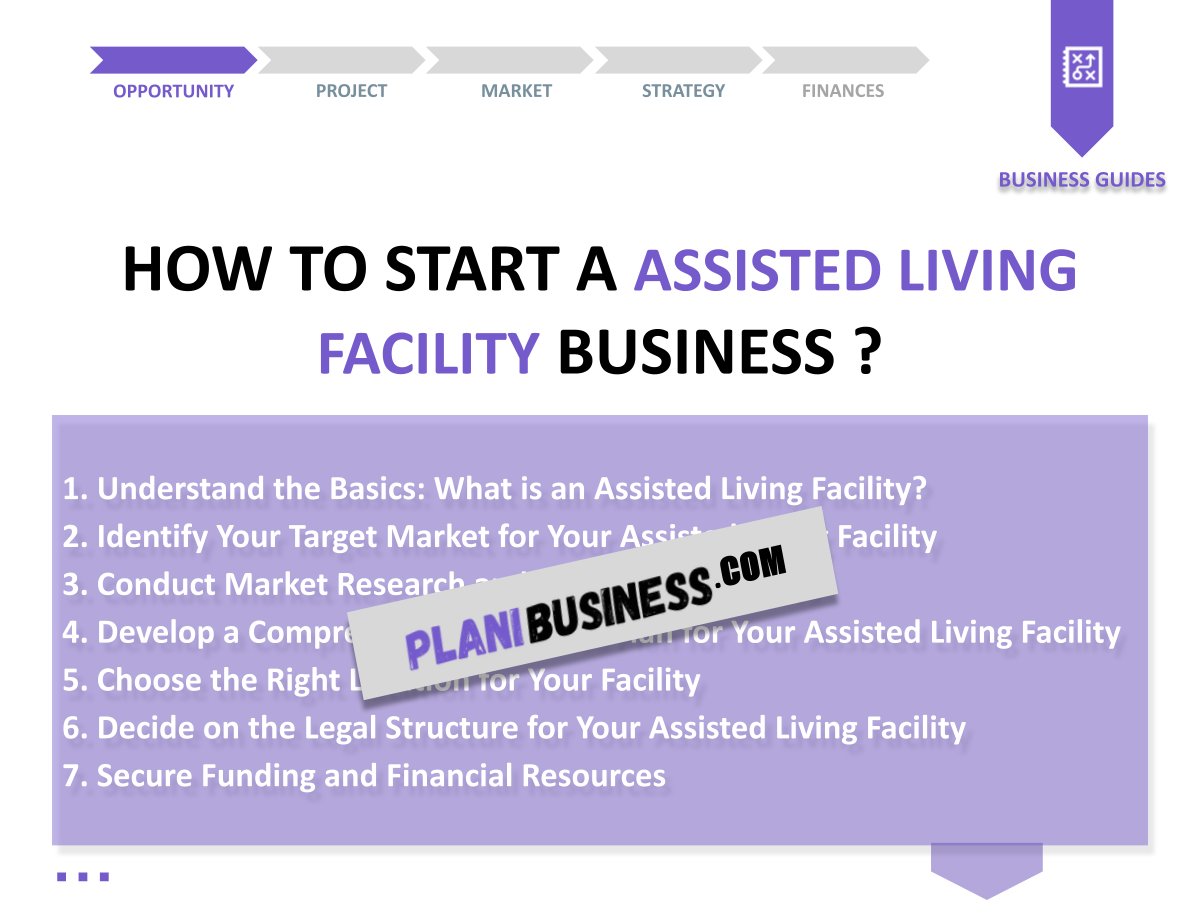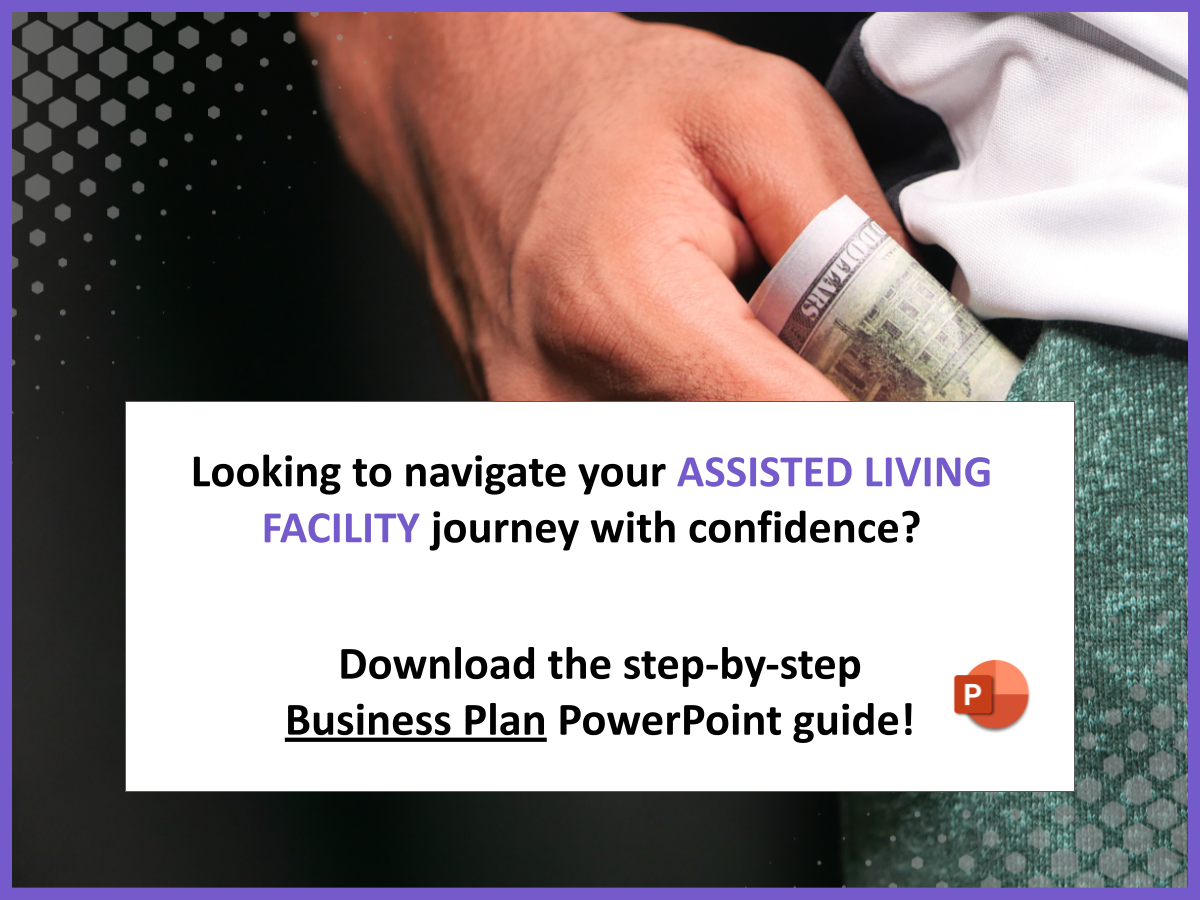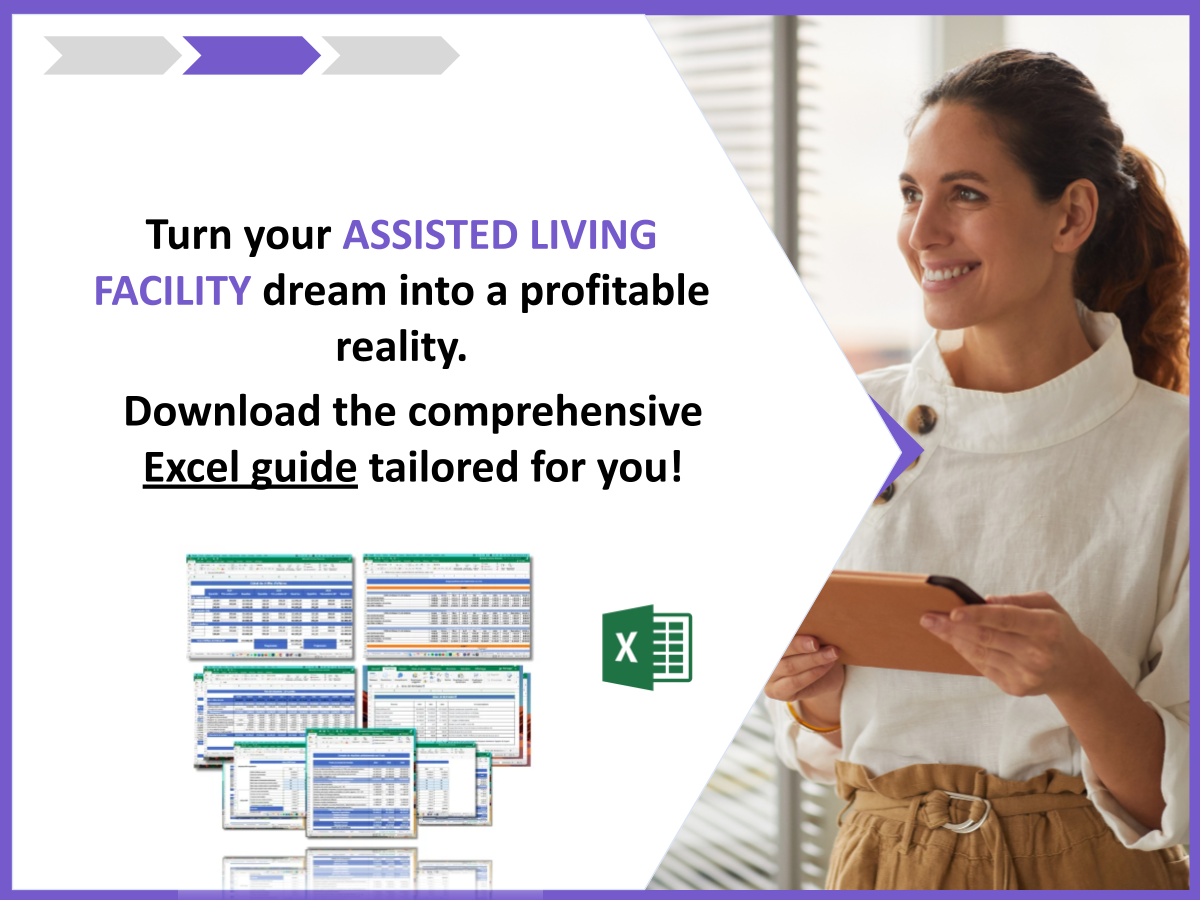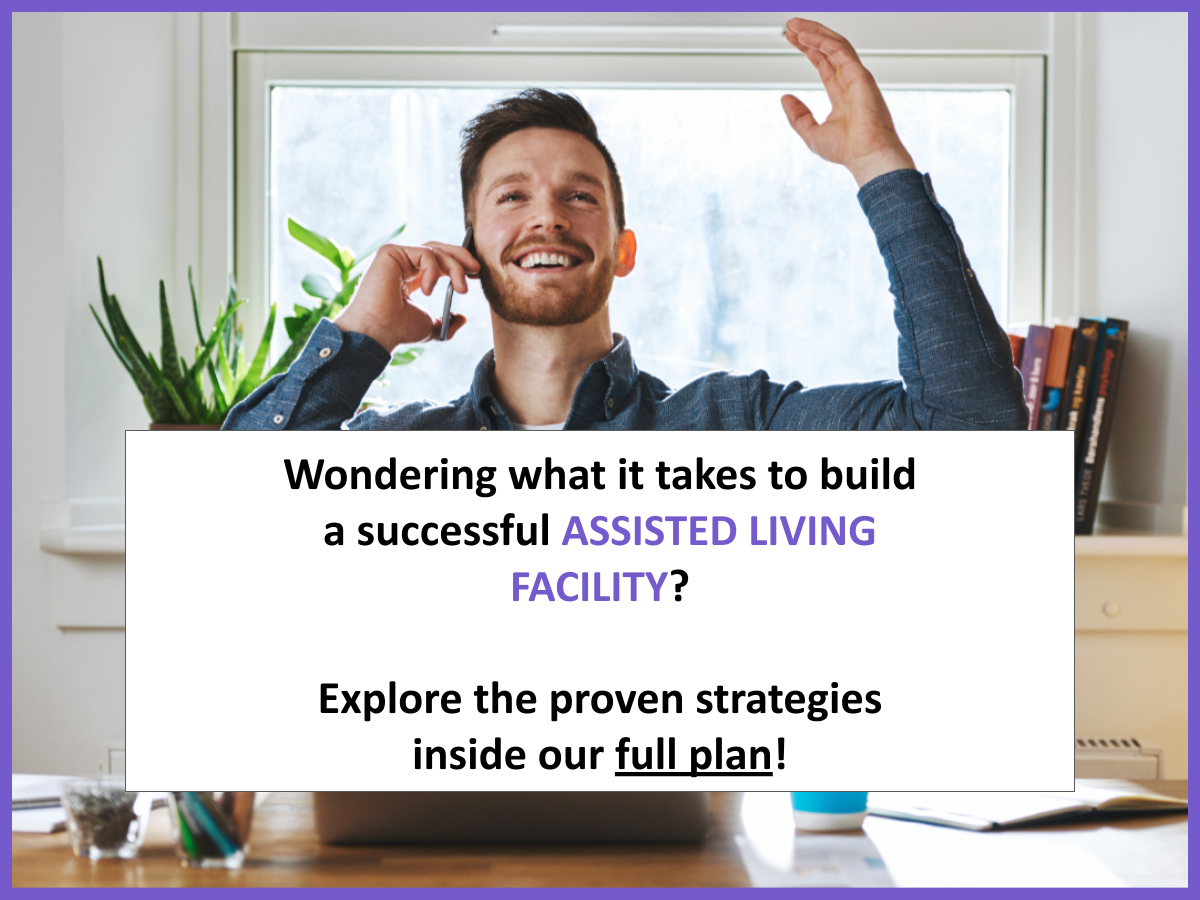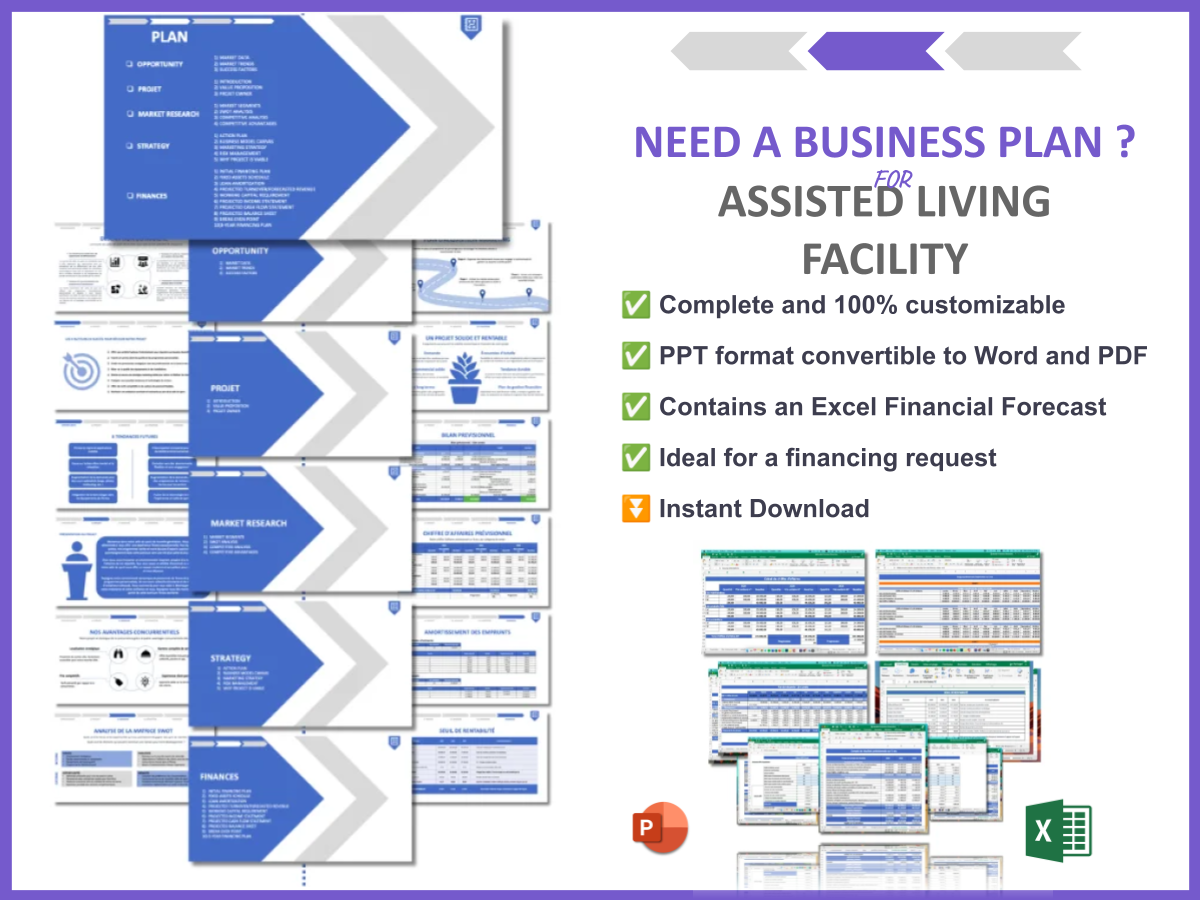Are you thinking about starting an assisted living facility? You’re not alone! The demand for assisted living facilities has surged, with over 800,000 residents in the U.S. alone, highlighting a significant opportunity for aspiring entrepreneurs. In this article, we’ll explore how to start an assisted living facility, guiding you through each critical step of the process.
We’ll cover the basics of what an assisted living facility is, how to identify your target market, conduct market research, develop a business plan, secure funding, and more. By the end of this article, you’ll have a clear roadmap to successfully launch your facility. Here’s what you can expect:
- Understanding the fundamentals of assisted living.
- Identifying your target market and conducting market research.
- Creating a comprehensive business plan.
- Choosing the right location and legal structure.
- Securing funding and obtaining necessary licenses.
- Assembling a dedicated team and marketing your facility.
1. Understand the Basics: What is an Assisted Living Facility?
Starting with a clear definition is crucial. An assisted living facility provides housing and support services for seniors who need assistance with daily activities but do not require full-time medical care. These facilities offer a combination of independent living and healthcare services, catering to the unique needs of each resident.
Here’s a quick overview of the key features of an assisted living facility:
- Personal Care Services: Assistance with daily activities such as bathing, dressing, and medication management.
- Social Activities: Organized events and outings to promote socialization among residents.
- Healthcare Access: On-site health services or partnerships with local healthcare providers for medical needs.
By understanding the fundamentals of an assisted living facility, you can better prepare yourself for the challenges and opportunities that lie ahead.
2. Identify Your Target Market for Your Assisted Living Facility
Researching demographics and understanding the needs of potential residents is key to your success. Identifying your target market will help you tailor your services and marketing strategies effectively. Here’s how to get started:
- Define Your Ideal Resident: Consider factors such as age, health conditions, and lifestyle preferences. Most residents are typically seniors aged 65 and older who require varying levels of assistance.
- Assess Financial Capabilities: Understand the financial means of your potential residents. Many seniors may rely on savings, pensions, or government assistance programs to afford their care.
- Conduct Surveys or Focus Groups: Engage with potential clients and their families to gather insights about their needs and expectations. This can provide invaluable information for shaping your services.
By defining your target market, you’ll be better equipped to create an assisted living facility that meets the specific needs of your community.
Here’s a simple table to help you visualize your target audience:
| Demographic | Characteristics |
|---|---|
| Age | Typically 65 years and older |
| Health Status | May have chronic conditions requiring assistance |
| Financial Situation | Varies; may rely on savings, pensions, or assistance |
| Location | Prefer facilities close to family or in familiar communities |
Understanding your target market will not only help in your planning but will also ensure that your assisted living facility resonates with the community you aim to serve.
3. Conduct Market Research and Assess Competitors
Analyzing the market and understanding your competitors is essential for success when starting an assisted living facility. Knowing what others offer can help you identify gaps in the market and develop a unique value proposition. Here’s how to effectively conduct your market research:
- Identify Existing Facilities: Research the current assisted living facilities in your area. Take note of their services, pricing, and occupancy rates.
- Evaluate Strengths and Weaknesses: Conduct a SWOT analysis for each competitor. This will help you understand their strengths, weaknesses, opportunities, and threats.
- Gather Community Feedback: Engage with families and residents to understand their experiences with existing facilities. This can provide insights into what works and what doesn’t.
Here’s a simple table to help you organize your competitor analysis:
| Competitor Name | Strengths | Weaknesses |
|---|---|---|
| Sunny Acres | Excellent staff-to-resident ratio | Higher pricing |
| Greenwood Lodge | Strong community involvement | Limited medical services |
| Silver Pines | Diverse activity programs | Older facility design |
By completing thorough market research, you can position your assisted living facility to stand out in a competitive landscape, catering to unmet needs and attracting potential residents.
4. Develop a Comprehensive Business Plan for Your Assisted Living Facility
A solid business plan is your roadmap to success. It outlines your vision, operational strategies, and financial projections. A comprehensive business plan for your assisted living facility should include the following key components:
- Executive Summary: A brief overview of your business concept, mission, and goals.
- Market Analysis: Findings from your market research, including target demographics and competitive landscape.
- Organizational Structure: A description of your management team and staffing plans.
- Services Offered: Detailed information about the services your facility will provide.
- Marketing Strategy: How you plan to attract and retain residents.
- Financial Projections: Estimated startup costs, revenue forecasts, and breakeven analysis.
I recommend checking out this business plan template for Assisted Living Facility. It’s super detailed and can save you a ton of time! Using a template can help ensure you cover all necessary aspects and stay organized.
In addition, consider including an appendix with any supporting documents, such as resumes of key team members, permits, or additional research findings. This will provide further credibility to your business plan.
By developing a comprehensive business plan, you’ll be well-prepared to navigate the challenges of launching and operating your assisted living facility, ultimately increasing your chances of success.
5. Choose the Right Location for Your Facility
The location of your assisted living facility can significantly impact its success. A well-chosen site will not only attract residents but also provide convenience for their families. Here are some key factors to consider when selecting a location:
- Accessibility: Ensure the facility is easily accessible for residents and visitors. Proximity to public transportation and major roadways can be a plus.
- Proximity to Healthcare: Being close to hospitals, clinics, and other healthcare providers is essential for residents who may need regular medical attention.
- Community Amenities: Look for locations near grocery stores, parks, and recreational facilities to enhance the quality of life for residents.
- Safety and Security: Evaluate the neighborhood’s safety record. A low-crime area is preferable for the peace of mind of residents and their families.
Here’s a simple table to help you compare potential locations:
| Location | Accessibility | Proximity to Healthcare | Community Amenities | Safety Rating |
|---|---|---|---|---|
| Downtown | Excellent | Close to hospitals | Nearby parks and shops | Good |
| Suburban Area | Moderate | Nearby clinics | Grocery stores | Very Good |
| Rural Area | Poor | Far from hospitals | Limited amenities | Fair |
By carefully considering these factors, you can choose a location that not only meets the needs of your future residents but also enhances the overall success of your assisted living facility.
6. Decide on the Legal Structure for Your Assisted Living Facility
Choosing the right legal structure for your assisted living facility is a critical step that impacts your taxes, liability, and management style. Here are the most common options to consider:
- Sole Proprietorship: Simple to set up, but you are personally liable for all debts and liabilities.
- Partnership: If you plan to start the facility with one or more partners, this structure allows for shared responsibility, but also shared liability.
- Limited Liability Company (LLC): Provides personal liability protection while allowing for flexibility in management. This is a popular choice for many small businesses.
- Corporation: More complex and costly to establish, but offers the greatest protection against personal liability. This structure may be suitable if you plan to expand in the future.
Consider the following factors when deciding on a structure:
- Liability Protection: How much personal risk are you willing to take on?
- Tax Implications: Different structures have varying tax responsibilities.
- Management Style: How do you envision running your facility?
It’s advisable to consult with a legal professional or business advisor to ensure you choose the best legal structure for your assisted living facility. This decision can have long-lasting implications for your business operations and personal finances.
7. Register Your Business to Make It Official
Once you’ve chosen a legal structure for your assisted living facility, the next step is to register your business officially. This process varies by state and can involve several steps. Here’s how to get started:
- Choose a Business Name: Select a name that reflects your facility’s mission and services. Ensure it’s unique and not already in use by another business.
- File for a Business License: Most states require a business license to operate legally. Check with your local government for specific requirements.
- Register for Taxes: Obtain a federal Employer Identification Number (EIN) from the IRS, which you’ll need for tax purposes and to hire employees.
- Check for Local Permits: Depending on your location, you may need additional permits or licenses specific to healthcare facilities.
Here’s a checklist to help you through the registration process:
- Business name registration
- Business license application
- Federal EIN application
- State tax registration
- Local permits and licenses
Completing these steps will ensure that your assisted living facility is legally recognized and compliant with local regulations, setting a solid foundation for your business.
8. Obtain Necessary Tax Identification Numbers, Licenses, and Permits
Operating an assisted living facility involves adhering to various regulations and obtaining the necessary licenses and permits. This is crucial to ensure compliance and avoid legal issues. Here’s what you need to know:
- Tax Identification Numbers: Besides your EIN, you may need state tax identification numbers. This is essential for payroll and sales tax purposes.
- Healthcare Licenses: Most states require specific licenses for operating healthcare facilities. Research the licensing requirements in your state, as they can vary significantly.
- Building and Safety Permits: If you’re renovating or building your facility, ensure you have the necessary permits to meet local building codes and safety regulations.
Here’s a simple table to summarize the common licenses and permits needed:
| License/Permit | Description | Authority |
|---|---|---|
| Business License | General license to operate a business | Local Government |
| Healthcare Facility License | License to operate a healthcare facility | State Health Department |
| Fire Safety Permit | Ensures facility meets fire safety codes | Local Fire Department |
By obtaining the necessary tax identification numbers, licenses, and permits, you can operate your assisted living facility with confidence, ensuring compliance with all regulations and providing peace of mind to residents and their families.
9. Set Up Your Financial Management Systems
Effective financial management is vital for the sustainability of your assisted living facility. Setting up a robust financial system will help you track expenses, manage budgets, and ensure compliance with regulations. Here’s how to establish your financial management systems:
- Choose Accounting Software: Invest in reliable accounting software that suits the needs of your facility. Look for features like invoicing, payroll, and financial reporting.
- Develop a Budget: Create a comprehensive budget that outlines your expected income and expenses. This should include staffing costs, utilities, maintenance, and marketing expenses.
- Establish a Billing System: Set up a billing system to manage resident fees, insurance reimbursements, and other income. Ensure it is user-friendly for both staff and residents.
- Monitor Cash Flow: Regularly review your cash flow to ensure that your facility can meet its financial obligations. This is crucial for maintaining operations and planning for future growth.
Here’s a simple table to help you organize your financial setup:
| Financial Component | Details | Tools/Software |
|---|---|---|
| Accounting Software | Track income and expenses | QuickBooks, FreshBooks |
| Budget Development | Outline expected income and expenses | Excel, Google Sheets |
| Billing System | Manage resident fees and payments | Bill.com, Zoho Invoice |
By establishing a solid financial management system, you’ll ensure that your assisted living facility operates smoothly and remains financially viable.
10. Create a Strong Brand Identity for Your Facility
Your brand identity is crucial in distinguishing your assisted living facility from competitors and attracting potential residents. A strong brand conveys your facility’s values, mission, and the quality of care provided. Here’s how to create a compelling brand identity:
- Develop a Unique Value Proposition: Clearly define what sets your facility apart. This could be specialized care programs, exceptional staff-to-resident ratios, or unique amenities.
- Create a Memorable Logo: Your logo should reflect your brand’s personality and be easily recognizable. Consider hiring a professional designer to create a logo that resonates with your target audience.
- Establish a Consistent Voice: Ensure that your marketing materials, website, and social media profiles convey a consistent voice and message. This builds trust and familiarity with your audience.
- Engage with the Community: Participate in local events and establish partnerships with community organizations. This helps build your reputation and reinforces your commitment to quality care.
Here’s a checklist to help you develop your brand identity:
- Define your unique value proposition
- Create a logo and visual identity
- Develop marketing materials (brochures, business cards, etc.)
- Engage on social media platforms
By creating a strong brand identity, you’ll position your assisted living facility as a trusted choice for families seeking care for their loved ones, ultimately enhancing your facility’s reputation and attracting new residents.
11. Develop a Professional Website for Your Assisted Living Facility
In today’s digital age, having a professional website is essential for any assisted living facility. Your website serves as a key marketing tool, providing information to potential residents and their families. Here are some steps to create an effective website:
- Choose a User-Friendly Platform: Select a website builder that is easy to navigate. Popular options include WordPress, Wix, and Squarespace.
- Design with Accessibility in Mind: Ensure that your website is accessible to all users, including those with disabilities. This may include using larger fonts, alt text for images, and clear navigation.
- Include Essential Information: Your website should feature information about services offered, pricing, staff qualifications, testimonials, and contact details.
- Incorporate a Blog: Regularly updated blogs can improve your site’s SEO and establish your facility as a thought leader in the industry. Share tips, news, and insights related to senior care.
Here’s a simple checklist for your website:
- Domain name registration
- Professional logo and branding
- Contact information and inquiry forms
- Service descriptions and pricing
- Blog section for updates and news
By developing a professional website, you’ll enhance your online presence and make it easier for families to find the information they need about your assisted living facility.
12. Market and Advertise Your Assisted Living Facility
Effective marketing is crucial for attracting residents to your assisted living facility. A well-rounded marketing strategy should encompass both online and offline efforts. Here are some strategies to consider:
- Leverage Social Media: Utilize platforms like Facebook and Instagram to share updates, success stories, and engage with the community. Regular posts can help build a loyal following.
- Host Community Events: Organize open houses, health fairs, or educational seminars to attract potential residents and their families. This helps build relationships and trust within the community.
- Utilize Online Advertising: Consider pay-per-click (PPC) advertising or social media ads to reach a broader audience. Target ads based on demographics and location to maximize effectiveness.
- Develop Partnerships: Collaborate with local hospitals, senior centers, and healthcare providers for referrals. Building a network can significantly enhance your marketing efforts.
Here’s a table summarizing various marketing strategies:
| Marketing Strategy | Description | Benefits |
|---|---|---|
| Social Media | Engage with community online | Builds brand awareness |
| Community Events | Host open houses and seminars | Fosters relationships |
| Online Advertising | PPC and social media ads | Reaches a targeted audience |
By implementing a comprehensive marketing strategy, you’ll increase visibility for your assisted living facility and attract more residents.
13. Assemble Your Team for Your Assisted Living Facility
Your staff is the backbone of your assisted living facility. Assembling a dedicated and qualified team is crucial to providing quality care. Here’s how to effectively build your team:
- Define Key Roles: Identify the essential positions needed, including caregivers, administrative staff, and management. Ensure that each role has clear responsibilities and qualifications.
- Recruit Qualified Candidates: Use various channels to find staff, including job boards, social media, and local colleges. Highlight the unique aspects of working at your facility to attract the right talent.
- Provide Comprehensive Training: Invest in training programs that cover care standards, safety protocols, and customer service. Continuous education helps staff stay updated on best practices.
- Foster a Positive Work Environment: Encourage teamwork and open communication among staff. Recognize and reward good performance to maintain high morale.
Here’s a checklist of key roles to consider:
- Facility Manager
- Registered Nurses
- Caregivers
- Administrative Staff
- Activities Coordinator
By assembling a dedicated team, you’ll ensure that your assisted living facility delivers exceptional care and support, ultimately enhancing the quality of life for your residents.
Conclusion
Starting an assisted living facility is a rewarding venture that requires careful planning, research, and execution. By following the steps outlined in this guide, you can create a facility that meets the needs of your residents and provides a safe, supportive environment. Remember, the foundation of your success lies in understanding your target market, establishing a solid business plan, and assembling a dedicated team.
As you embark on this journey, consider enhancing your knowledge further. I recommend checking out our article on how to create a SWOT Analysis for Assisted Living Facility. This will help you identify strengths, weaknesses, opportunities, and threats in your planning process. Additionally, our article on How to Develop an Assisted Living Facility Marketing Plan? With Example offers insights into effectively promoting your facility to attract residents. Best of luck in your endeavors!
FAQ
1. What is an assisted living facility?
An assisted living facility is a residential option for seniors who require assistance with daily activities such as bathing, dressing, and medication management, while still enjoying some level of independence.
2. How do I start an assisted living facility?
To start an assisted living facility, you need to conduct market research, develop a business plan, choose a suitable location, secure financing, and obtain the necessary licenses and permits.
3. What are the legal requirements for opening an assisted living facility?
Legal requirements vary by state but generally include obtaining a business license, healthcare facility license, and ensuring compliance with zoning and health regulations.
4. How much does it cost to open an assisted living facility?
The cost to open an assisted living facility can vary widely depending on location, size, and services offered, but it typically ranges from hundreds of thousands to millions of dollars.
5. What services are typically offered in assisted living facilities?
Services in assisted living facilities often include personal care, medication management, meal preparation, housekeeping, and recreational activities.
6. How do I find funding for my assisted living facility?
Funding options for an assisted living facility may include personal savings, bank loans, private investors, and government grants specifically aimed at healthcare facilities.
7. What is the staff-to-resident ratio in assisted living facilities?
The staff-to-resident ratio can vary but is often around 1 staff member for every 5 to 10 residents, depending on the level of care required.
8. How do I market my assisted living facility?
Marketing strategies for an assisted living facility include social media engagement, community events, online advertising, and building partnerships with local healthcare providers.
9. What are the challenges of running an assisted living facility?
Challenges may include regulatory compliance, staffing issues, maintaining quality care, and effectively managing finances.
10. How do I ensure quality care in my assisted living facility?
Ensuring quality care involves hiring qualified staff, providing ongoing training, maintaining proper staffing ratios, and regularly seeking feedback from residents and families.

